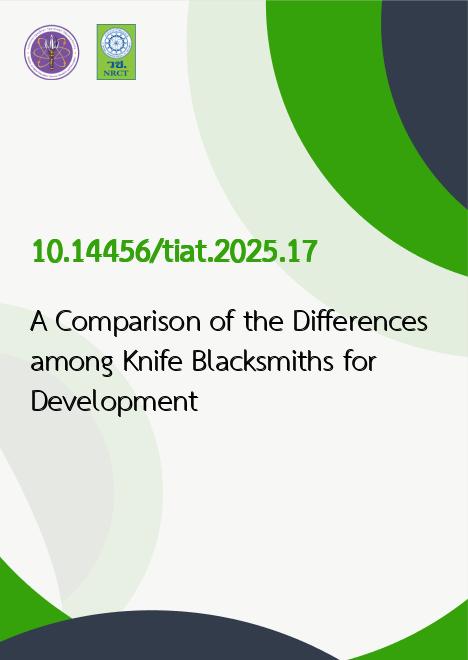
|
A Comparison of the Differences among Knife Blacksmiths for Development |
|---|---|
| รหัสดีโอไอ | |
| Creator | Warawut Tiwasing |
| Title | A Comparison of the Differences among Knife Blacksmiths for Development |
| Contributor | Nattawatchara Detmala, Artiyaporn Sinprasert |
| Publisher | Kalasin University |
| Publication Year | 2568 |
| Journal Title | Asian Journal of Traditional and Innovative Arts and Textiles |
| Journal Vol. | 4 |
| Journal No. | 3 |
| Page no. | 241–257 |
| Keyword | Blacksmith, Compartion, Difference, Development |
| URL Website | https://so06.tci-thaijo.org/index.php/TIAT/article/view/283279/ |
| Website title | https://so06.tci-thaijo.org/index.php/TIAT/article/ |
| ISSN | 2821-921X (Online) |
| Abstract | This article is a qualitative research study with the following objectives 1)To examine the occupational conditions of blacksmiths. 2)To compare the differences among blacksmiths and the factors influencing their development. The key informants were three blacksmiths, selected purposively. Data were collected through fieldwork using structured interviews and non-participant observation. The data were analyzed by content analysis and presented through analytical description.The findings showed that the works of each type of blacksmith followed product design principles but varied in some aspects, depending on patterns of use and customer preferences. In terms of local wisdom, traditional blacksmiths developed product forms and materials less than craft blacksmiths and industrial blacksmiths, resulting in a lack of new customers. The invention of working tools by craft blacksmiths made their products distinctive. The application of technology and systematic functional structures by industrial blacksmiths had positive effects on product quality and business development. Both craft and industrial blacksmiths used social media to promote sales,which helped attract new customers and created shared experiences that enhanced the perceived value of blacksmithing knowledge. The success of blacksmithing as a profession can also serve as an example for communities and inspire younger generations to continue and preserve this traditional knowledge. |